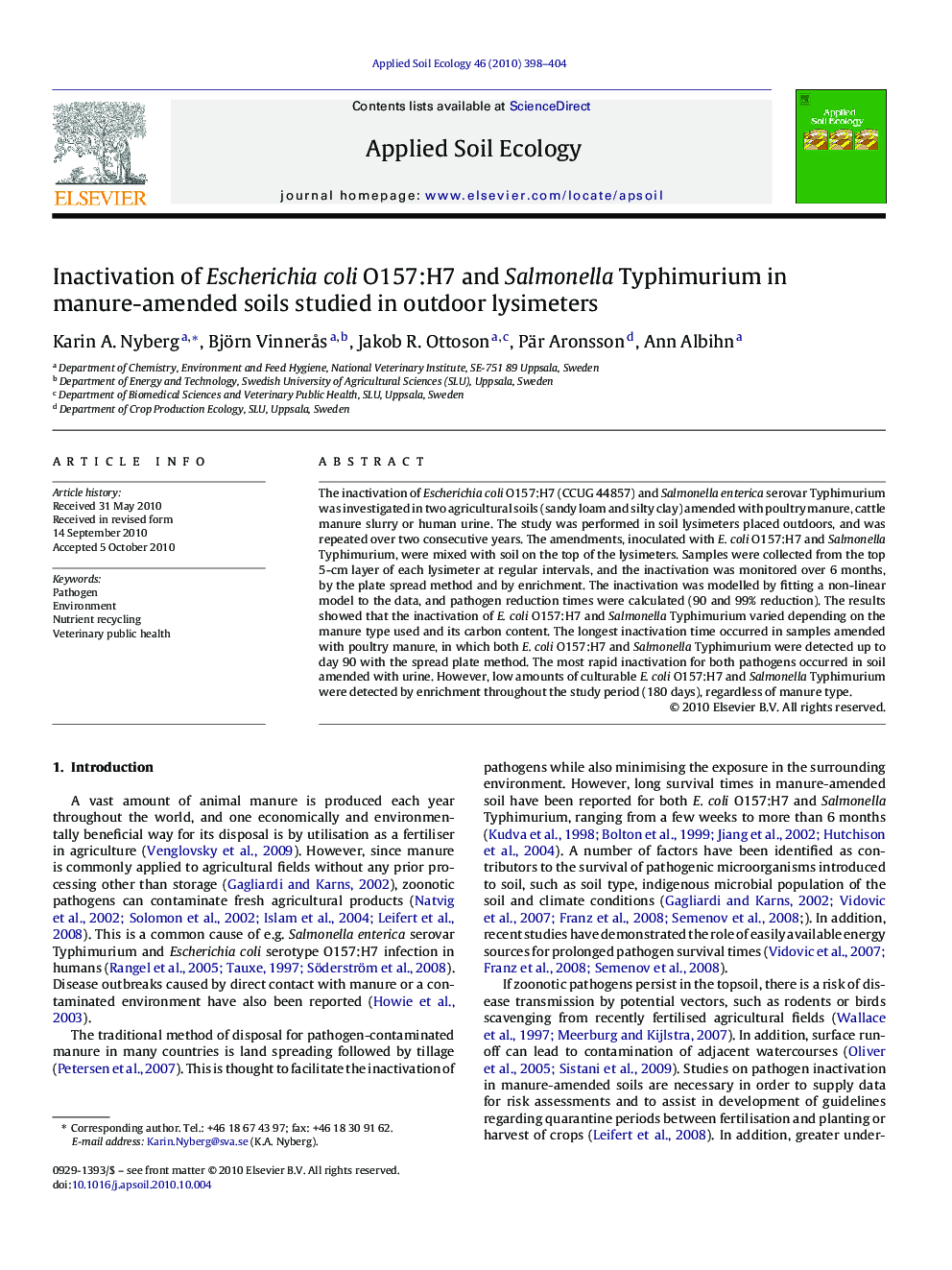| Article ID | Journal | Published Year | Pages | File Type |
|---|---|---|---|---|
| 4382808 | Applied Soil Ecology | 2010 | 7 Pages |
The inactivation of Escherichia coli O157:H7 (CCUG 44857) and Salmonella enterica serovar Typhimurium was investigated in two agricultural soils (sandy loam and silty clay) amended with poultry manure, cattle manure slurry or human urine. The study was performed in soil lysimeters placed outdoors, and was repeated over two consecutive years. The amendments, inoculated with E. coli O157:H7 and Salmonella Typhimurium, were mixed with soil on the top of the lysimeters. Samples were collected from the top 5-cm layer of each lysimeter at regular intervals, and the inactivation was monitored over 6 months, by the plate spread method and by enrichment. The inactivation was modelled by fitting a non-linear model to the data, and pathogen reduction times were calculated (90 and 99% reduction). The results showed that the inactivation of E. coli O157:H7 and Salmonella Typhimurium varied depending on the manure type used and its carbon content. The longest inactivation time occurred in samples amended with poultry manure, in which both E. coli O157:H7 and Salmonella Typhimurium were detected up to day 90 with the spread plate method. The most rapid inactivation for both pathogens occurred in soil amended with urine. However, low amounts of culturable E. coli O157:H7 and Salmonella Typhimurium were detected by enrichment throughout the study period (180 days), regardless of manure type.
Research highlights▶ Type of organic amendment affected the pathogen reduction rate. ▶ The reduction varied depending on the carbon content of the organic amendment.▶ Low amount of the pathogens persisted regardless of type of amendment.
